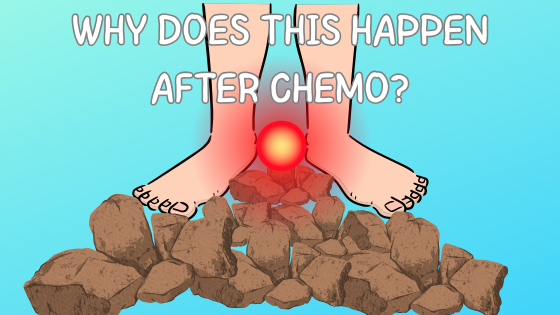Neuropathy After Chemotherapy: How Physical Therapy Can Help
Peripheral neuropathy affects between 68% and 85% of patients who receive chemotherapy. It is a common but often overlooked side effect that can significantly affect mobility, safety, and quality of life—but there is help.

🔍 What Is Chemotherapy-Induced Neuropathy (CIPN)?
- CIPN is a form of nerve damage caused by certain chemotherapy medications. These drugs can lead to:
- ● Inflammation of the nerves
- ● Altered nerve excitability
- ● Reduced sensation
- ● Disrupted nerve signal transmission
- ● Muscle weakness
⚠ Common Symptoms
- Neuropathy symptoms can appear during treatment, immediately after, or several weeks to months later. In some cases, symptoms resolve within 3 to 6 months; in others, they may persist indefinitely, depending on the severity.
Symptoms include: - ● Numbness and tingling in hands or feet
- ● “Pins and needles” sensations
- ● Feeling like you’re wearing gloves or socks when you’re not
- ● Poor balance or unsteady walking
- ● Cold sensations in hands or feet
- ● “Walking on rocks” or feeling like there’s something in the shoe
- ● Symptoms are often symmetrical (both feet or both hands)
- ● Symptoms may worsen at night or just before bed
- ● Usually not painful, but very disruptive
In severe cases, neuropathy can be so debilitating that oncologists are forced to pause or discontinue chemotherapy.
💪 Physical Therapy Can Help
Research shows that targeted physical therapy can:
✅ Improve nerve function
✅ Enhance balance and walking
✅ Reduce symptoms like tingling and numbness
✅ Prevent falls and injury
✅ Support muscle strength and coordination
✅ Improve overall quality of life
- A complete physical therapy program may include:
🔹 Movilización de tejidos blandos and trigger point release
🔹 Ankle exercises
🔹 Stretching for calves, lower leg, and plantar fascia
🔹 Ankle proprioception & balance retraining
🔹 Walking programs and graded activity
With consistency, many patients begin to feel significant improvement within 10 to 12 weeks.
📅 When Should You Start?
● Before chemotherapy to build strength and resilience
● During treatment to prevent symptoms or reduce severity
● After treatment to recover lost function and reduce lingering symptoms
📢 Share This Information with Your Healthcare Team
If you’re an oncologist, nurse, or caregiver, consider sharing this newsletter with patients. Early referral to physical therapy may help prevent treatment interruptions and support long-term recovery.
If you’re a patient experiencing symptoms, reach out to your physical therapist today. You don’t have to live with neuropathy.
📞 Let’s Talk
Have questions about how physical therapy can help with neuropathy?

